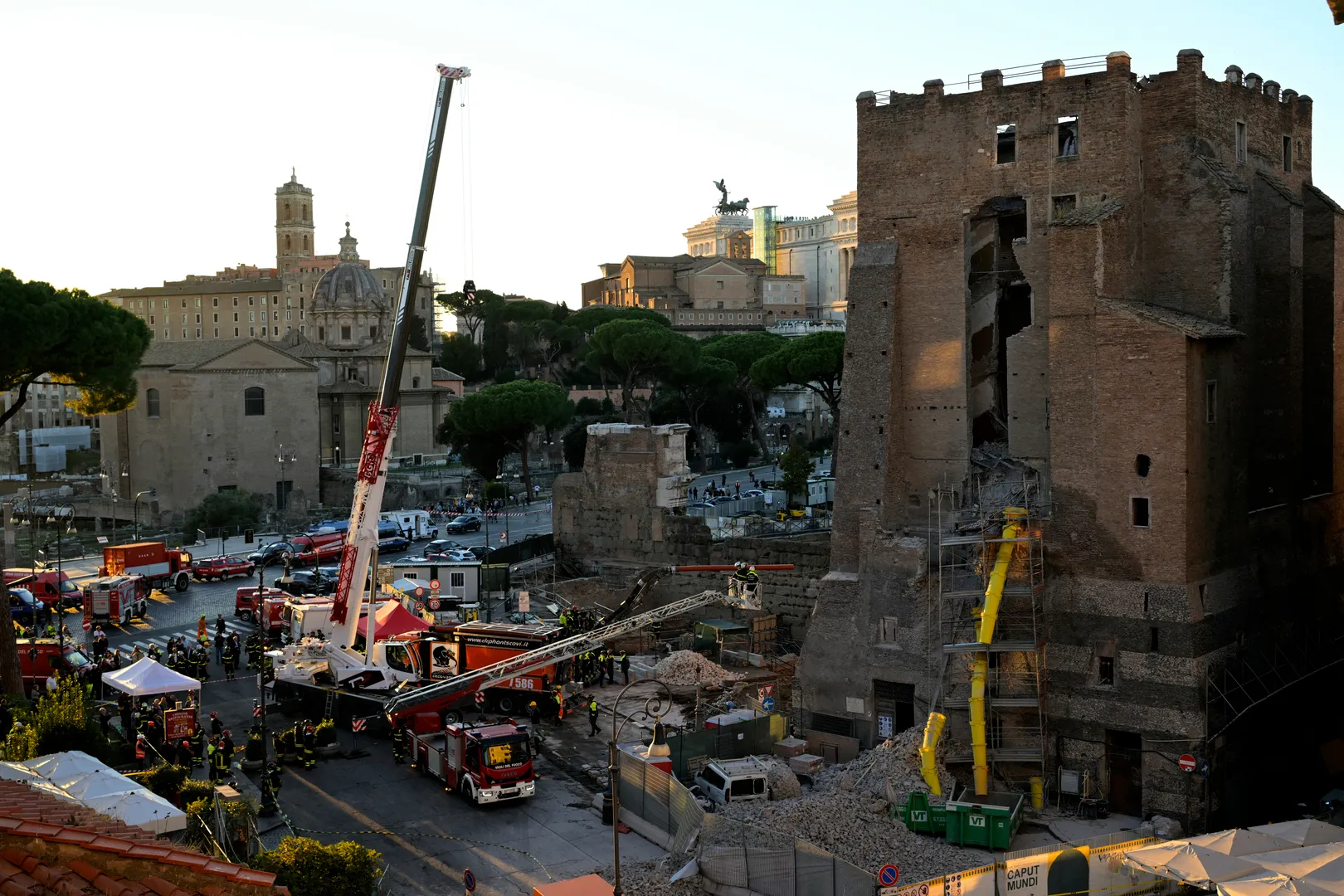Worker trapped after medieval Rome tower partially collapses | Infrastructure
Video shows part of Rome’s medieval Torre dei Conti collapse for a second time during a restoration near the Colosseum. One seriously injured worker remained trapped Monday evening with firefighters continuing a high-risk rescue as the tower’s stability is assessed.
Published On 3 Nov 2025

